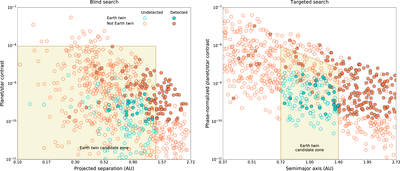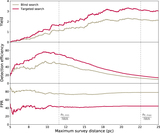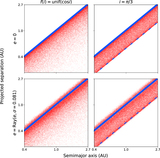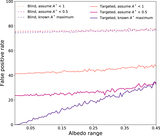Image Details

Caption: Figure 2.
A comparison of survey returns in terms of the direct imaging observables, for a blind survey where planets are at random orbital phase (left), vs. a survey revisiting known planets at their brightest observable phase (right). Based on a simulated survey with 103 stars, i.e., inflated by an order of magnitude, for visualization. Yellow regions show the “candidate zone” where a true Earth twin could possibly fall. Solid circles are detected planets, while empty circles are undetected planets. Blue circles represent Earth twins, and orange circles are un-Earths. Orange filled circles within the shaded region constitute planetary false positives: un-Earths masquerading as Earth twins.
Copyright and Terms & Conditions
© 2018. The American Astronomical Society. All rights reserved.









